I’ve been spending a lot of time lately kayaking through tupelo/cypress (Nyssa aquatica and Taxodium distichum) swamps in eastern North Carolina, partly in connection with my continued dabbling in research, but largely for fun. I’ve also become interested in what I call “ravine swamps,” which exist along the valley side slopes of the Neuse River estuary and are dominated by tupelo gum (aka water tupelo, swamp tupelo) and bald cypress. Heck, I even own a little bit of one next to my house.

Ravine swamp, Craven County, N.C., in winter. The scar on the foreground tree is from a floating log repeatedly bashing against it during a flood event (probably Hurricane Florence).
In my efforts to learn more about these bottomland hardwood swamps I read Status and Trends of Bottomland Hardwood Forests in the Mid-Atlantic Region (Rose and Meadows, 2016), and came across this:
Cypress / tupelo stands are of particular concern because as these large-diameter sized stands begin to die and break up over time, they may or may not regenerate to cypress / tupelo. Both species are intolerant of shade, especially as seedlings, and require some form of fairly large-scale stand disturbance in order to regenerate successfully. In addition, developing seedlings of both species need at least a few years of dry conditions to grow tall enough to survive future flooding during the growing season. Large-diameter stands that die and break up in the absence of stand disturbance and/or during wet periods often regenerate to privet and buttonbush, resulting in a decline in the acreage of the cypress / tupelo forest type . . . .
At the same time, I’ve been wondering about the ravine swamps, the core of which have standing water year-round, which would make it difficult, if not impossible, for the key trees to regenerate. The valleys in which they formed were eroded during lower stands of sea level, and they now sit only about a meter or so above sea level and the Neuse River estuary. They could have become established when water tables were lower or during a severe, prolonged drought. But they are old enough to have had multiple generations of forest, which raises the question of how they have been maintained.
The passage above mentions large-scale disturbance, and cypress (which has been studied more than tupelo gum) has long been known to germinate mainly in particular geomorphic settings such as infilling oxbow lakes and along channel margins. Nyssa aquatica is apparently similar in its habitat preferences, seed dispersal (both are, unsurprisingly, hydrochores, with floating seeds dispersed by water). Both can withstand constant inundation once established, but cannot regenerate from seed in flooded conditions.
I think the key is disturbance, but not necessarily large-scale disturbance. During Hurricane Florence (2018), significant portions of the ravine swamps were covered with 0.5 to 1.0 meters of sand, turning mucky clay with frequent standing water into higher, drier surfaces (the deeper interiors of the swamps apparently got enough flushing flow from Florence’s torrential rain to keep or wash the sand out; only a thin layer remained when I got there a few days after the storm). New plants, including cypress, colonized the deposits.

Young Taxodium distichum in sandy deposits from Hurricane Florence in September 2018, photographed in May 2021.
But this does not explain how tupelo/cypress stands are maintained in the permanently inundated interiors. As I write this area is in moderate drought, and I would still get wet up to my waist (I am almost 2 m tall) walking across the nearest one. Further, there are none of the telltale soil indicators (e.g., redox concretions) of wetland soils that dry out occasionally. While the scale of sand deposition and encroachment from Florence was unprecedented, the general phenomenon is not, as we are in an area blessed with both tropical and extratropical cyclones (nor’easters).
One mechanism for tree reproduction that doesn’t depend on seed germination (which does not occur underwater for tupelo or cypress) is stump sprouting—a living or dead tree is broken (typically by wind during storm disturbance events) or cut and new trunks spout from the trunk. This coppice-type growth appears commonly in Nyssa aquatica. Stump sprouting can occur in bald cypress, but is rare or absent in some stands, including those hereabouts that I’ve observed. Even where it does occur, studies suggest it is not sufficient to maintain cypress numbers. Here cypress stumps do often support growth of other tree species—an example of negative ecosystem engineering?
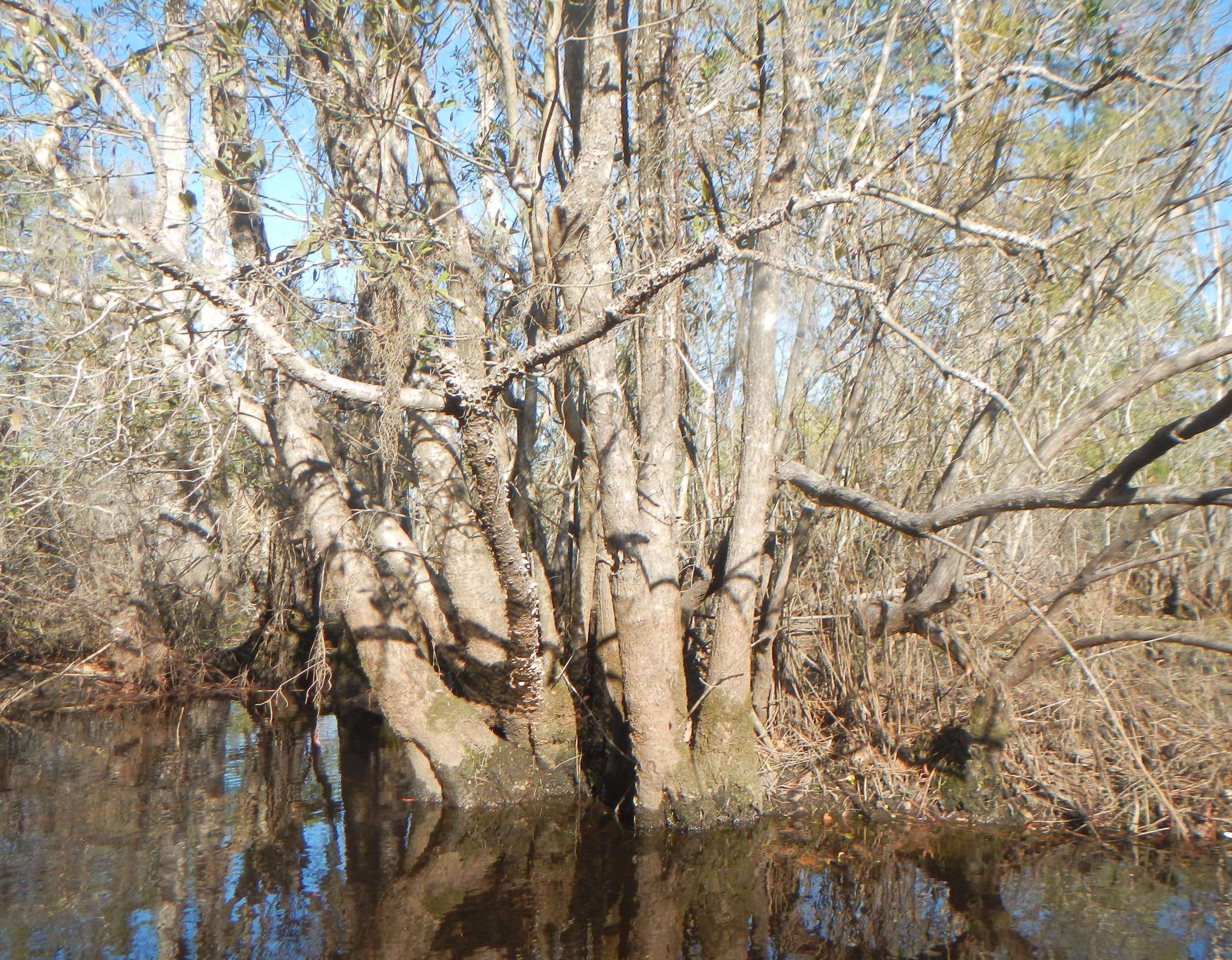
Coppice growth from stumps, Brice's Creek near New Bern, NC
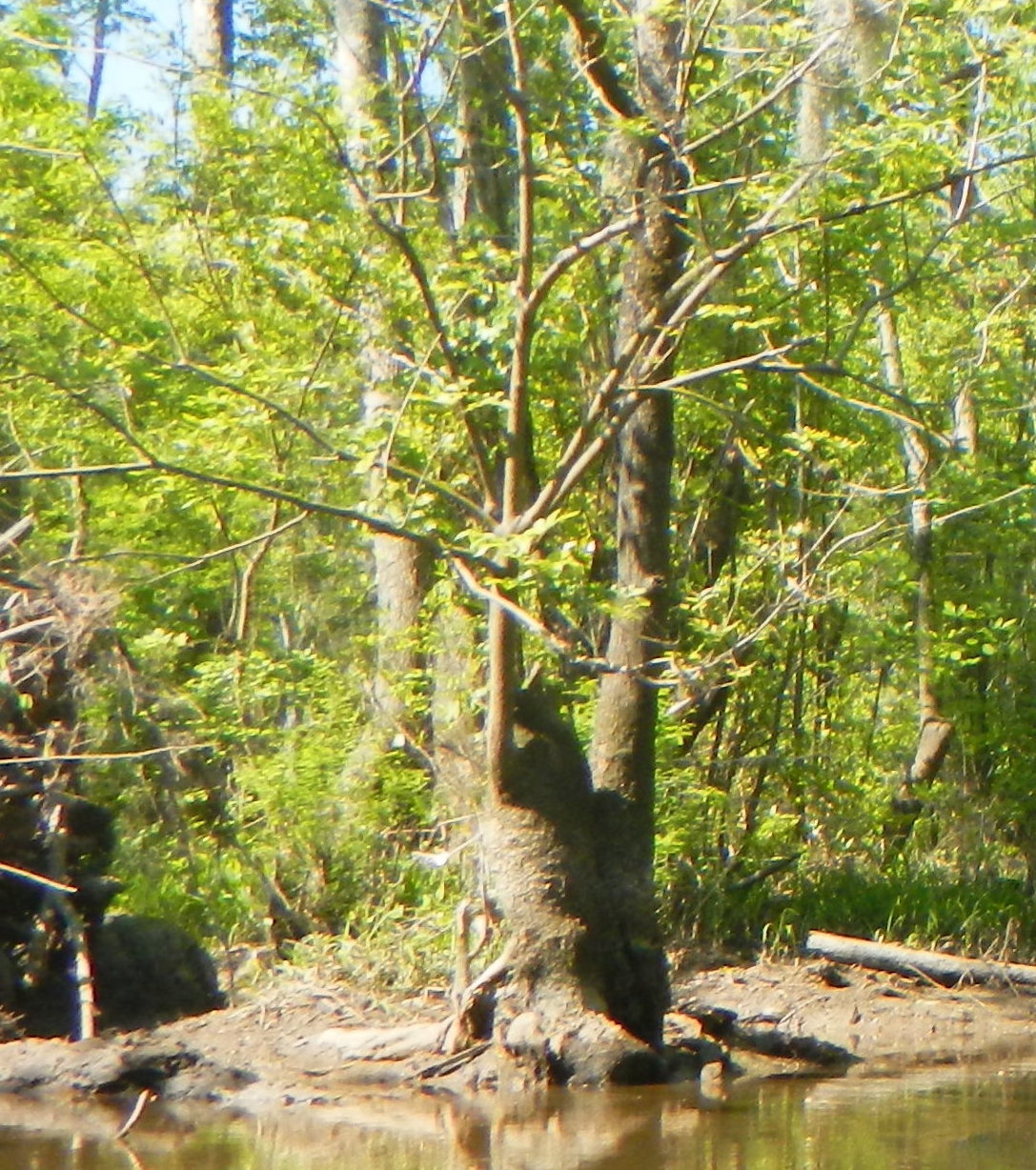
Stump sprouting, Nyssa aquatica, Neuse River
A second mechanism is uprooting (tree throw), where soil pulled out by the roots of the toppled tree is elevated above the surface, and is thus available for trees to germinate above the waterline. While tree rootwads and uproot mounds are favorable sites for new trees in many forests, it may be less so for the thin, disk-like rootwads of swamp trees, which don’t present much horizontal surface area for seeds to land on. Still, the eventual decay of the roots and resulting deposition of the sediment can leave a small mound or hummock above water level for new trees to grow on.
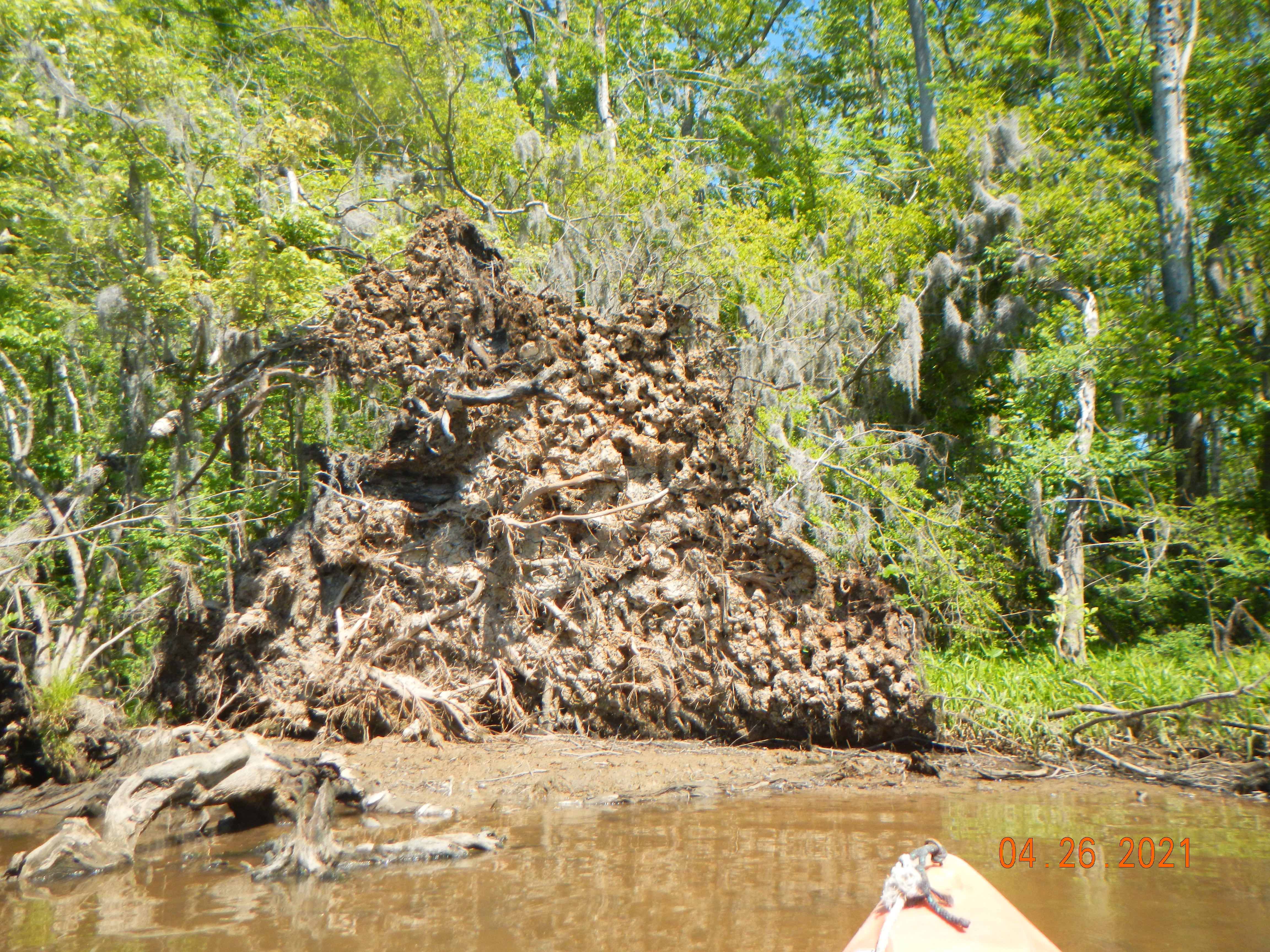
Typical uprooted swamp tree, with limited horizontal surface area on rootwad for seedlings to establish.
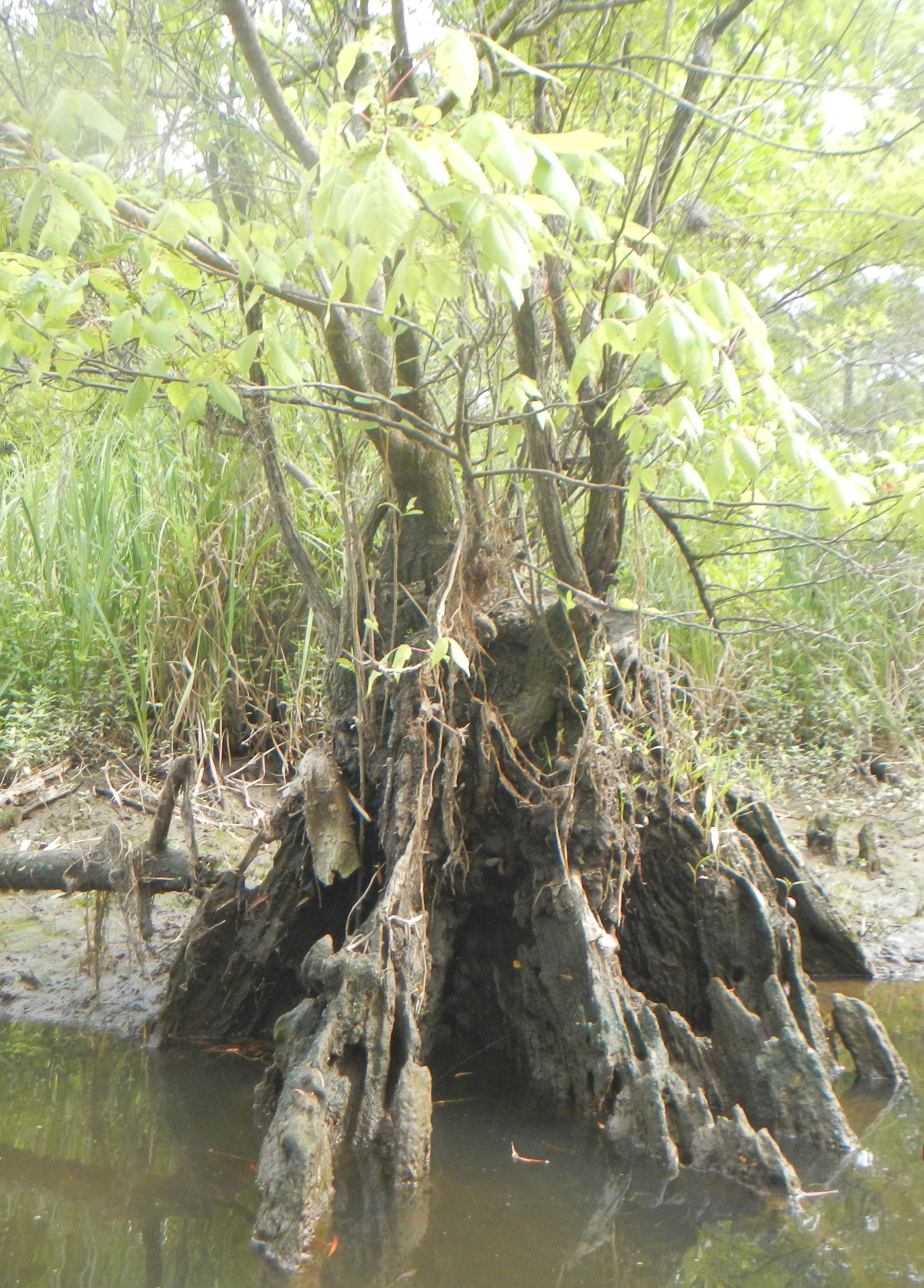
Unidentified (but not cypress) tree growing on bald cypress stump.
The third likely main mechanism is nurse logs. Uprooting or breaking puts a trunk on the ground, in which new trees can become established as the trunk decomposes. This also seems to be quite common for tupelo gum, and rare (in my area at least) for Taxodium.
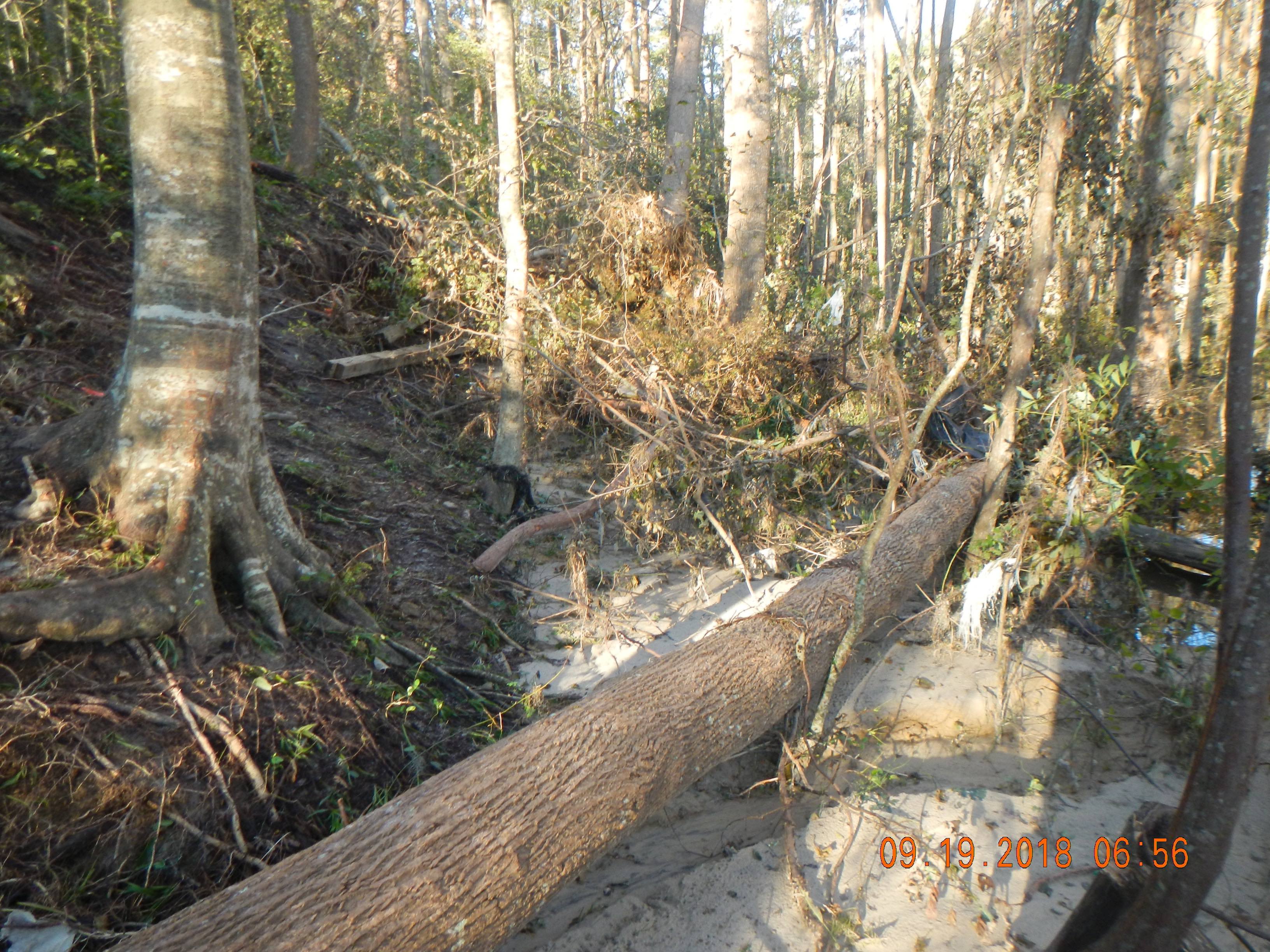
Cypress log downed by Hurricane Florence in ravine swamp. Note also sand deposited in the wetland by storm.
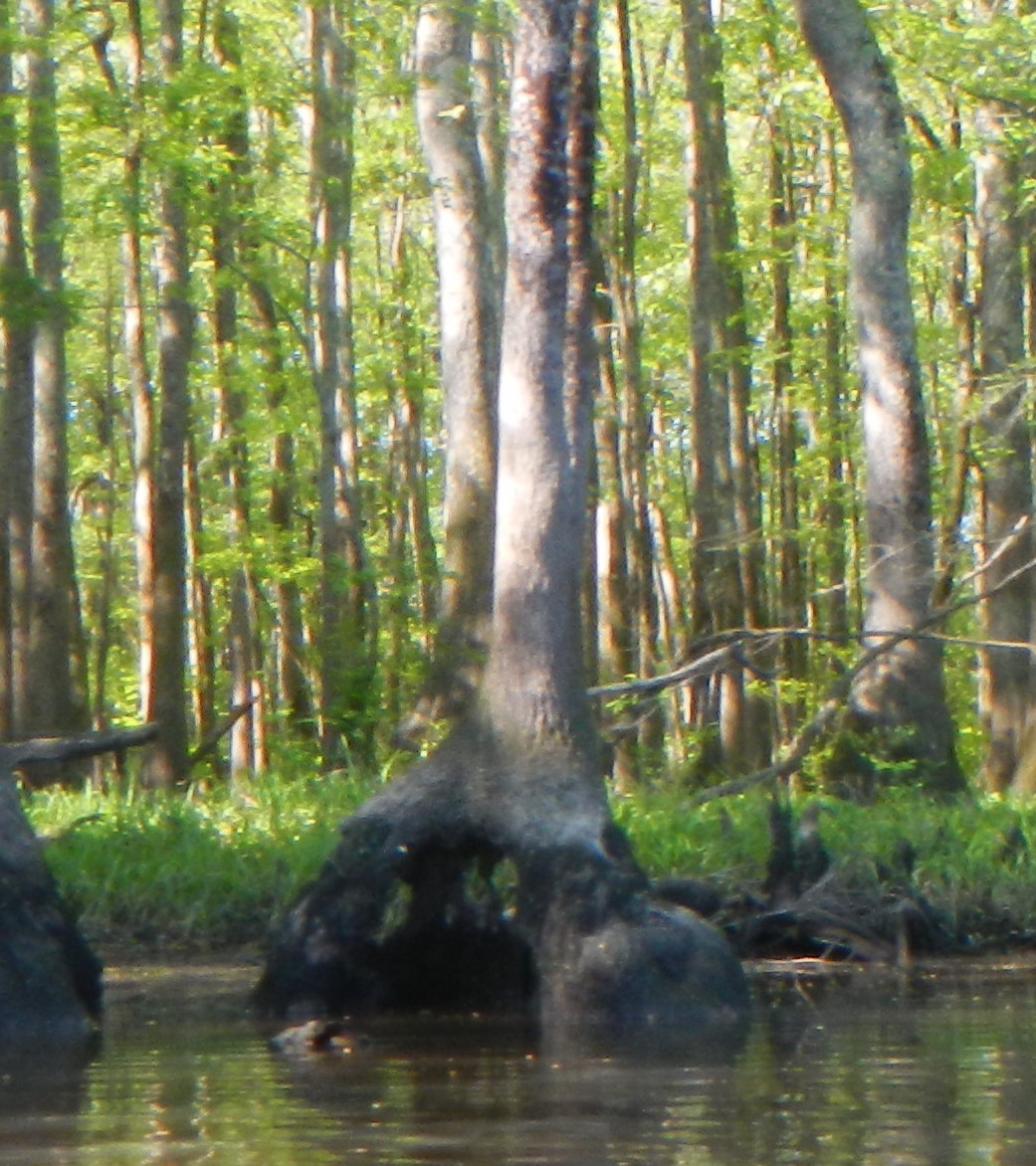
The arch-like "two-footed" form of this tupelo gum indicates its origin from a seedling on a nurse log which has since decayed.
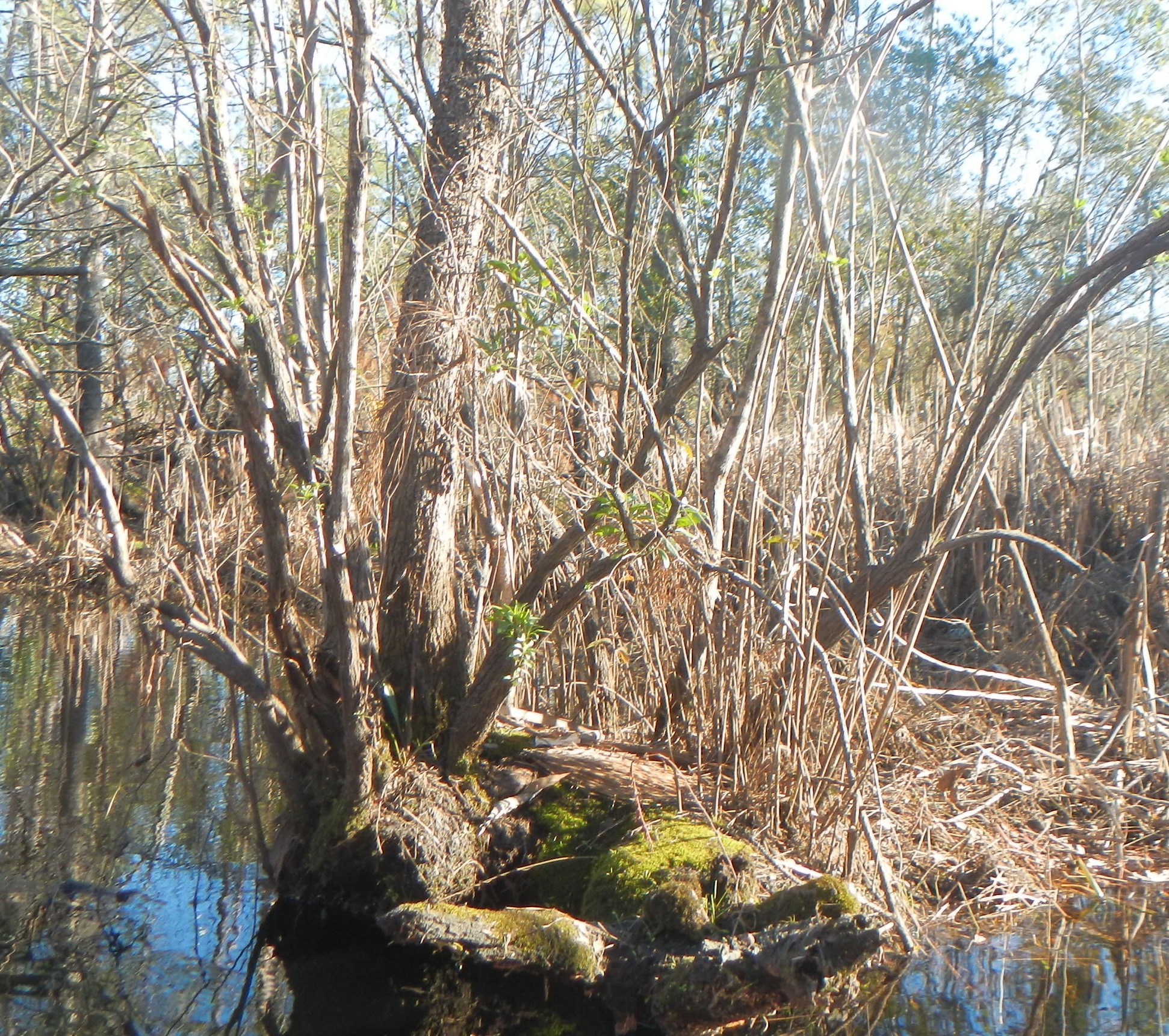
Willow oak resprouted from a downed log.
What do all these mechanisms have in common? Trees breaking or blowing over. This can happen in moderate winds to a dying or dead tree, but most happens during tropical or extratropical cyclones. However, even in the relatively small, highly exposed ravine swamps along the Neuse, nothing approaching a stand-replacing disturbance has ever been known to occur (I can personally vouch for the past 30 years). But a handful of trees (sometimes a pretty big handful) during big storms and a single or double every now and then may be enough to maintain the tupelo/cypress swamps if we protect them from other threats.
In the ravine swamps nearby, cypress is most common around the shallower edges, while the interiors are nearly 100 percent tupelo. Similarly, along some riverine swamps along the lowermost Neuse River upstream of the Neuse estuary the cypress are concentrated near banks, while the interior backswamps are tupelo dominated (though in both environments a number of other trees are also found, including red maple, black gum, swamp white oak, willow oak, and sycamore). Along the outer ravine swamps and river banks (which are low and often indistinct in the area I am talking about) the soil may dry out during dry spells, allowing cypress and tupelo establishment from seeds. Sediment deposition following storms or floods is also most likely in these settings. The ravine swamp interiors and lowest portions of the floodplain backswamps generally remain inundated, and thus seem to become dominated by trees that, once they gain a foothold (or roothold, I guess), are able to reproduce via stump sprouting and nurse logs.
Some research has suggested that in the lower reaches of coastal plain rivers, as sea-level rise continues tupelo gum is likely to increase in importance at the expense of bald cypress. My observations here are consistent with that—sea-level rise means more frequent and longer inundation, which works again both trees in terms of seed sprouting, but provides a comparative advance to tupelo gum, which is better at stump and nurse log sprouting.
